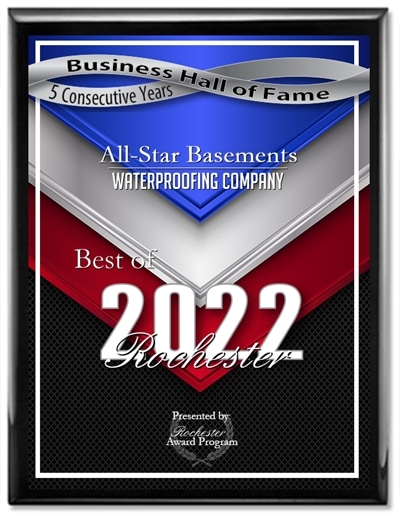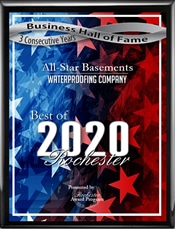A dry, secure basement is a valuable asset to any home, providing additional living space, storage, and an extra layer of protection for the home’s foundation. However, basements are particularly vulnerable to water infiltration due to their location below ground level, making waterproofing essential. This article aims to guide homeowners through the best practices and techniques for basement waterproofing to prevent leaks, water damage, and moisture buildup.
Waterproofing a basement is crucial not only for preventing water damage but also for protecting the overall health of the home. Moisture entering the basement can lead to a variety of problems:
- Mold and Mildew Growth: Excess moisture creates the perfect environment for mold and mildew to thrive, which can affect indoor air quality and lead to health issues for the home’s occupants.
- Foundation Damage: Persistent water exposure can weaken the foundation over time, causing cracks and structural instability.
- Decreased Property Value: Homes with persistent water issues in the basement are less attractive to potential buyers, reducing the property’s value.
Recognizing the early signs of water infiltration can help you address issues before they escalate. Some key indicators of water problems in the basement include:
- Damp Walls or Floors: If you notice areas of the basement that are persistently damp, this could indicate water seeping through the walls or floor.

- Musty Odors: A musty smell is often a sign of mold or mildew, which thrives in damp environments.
- Efflorescence: White, powdery deposits on the walls are a sign of water evaporating through the foundation, leaving behind salts from the ground.
- Visible Cracks: Cracks in the walls or floor of the basement can serve as entry points for water.
Interior basement waterproofing solutions are designed to manage water that has already entered the basement. While these techniques won’t prevent water from seeping in, they can help manage and redirect it to keep your basement dry.
- Vapor Barriers: Installing a vapor barrier on the walls can help reduce the amount of moisture entering the basement. These barriers are typically made of polyethylene sheets that block water vapor and prevent it from penetrating the walls.
- Basement Dehumidifiers: High humidity levels can exacerbate basement moisture problems. Installing a dehumidifier can help reduce indoor humidity, keeping the air dry and preventing the growth of mold and mildew.
- Waterproof Paint: While not a permanent solution, waterproof paint can provide a temporary barrier against water seepage. It’s applied to the interior walls and floors to seal minor leaks and damp spots.
Exterior waterproofing methods are essential for preventing water from entering the basement in the first place. These techniques are more invasive and often require professional installation, but they offer long term protection against water infiltration.
- Exterior Membranes and Coatings: One of the most effective exterior waterproofing methods involves applying waterproof membranes or coatings to the foundation’s outer walls. These materials create a continuous, impermeable barrier that prevents water from seeping into the basement. The process typically involves excavating around the foundation to expose the walls before applying the membrane. Popular choices for this purpose include asphalt-modified polyurethane or rubberized asphalt membranes.
- Exterior French Drain Systems: A French drain system is another popular exterior waterproofing solution. Installed around the perimeter of the foundation, this system collects and redirects water away from the basement. The drain consists of a perforated pipe buried in a gravel-filled trench that collects groundwater and channels it away from the foundation, reducing hydrostatic pressure.
- Foundation Grading: Ensuring the ground around your home slopes away from the foundation is a fundamental step in exterior waterproofing. Proper grading prevents water from pooling around the base of the house and seeping into the basement. In areas with poor soil drainage, additional landscaping solutions, such as swales or surface drains, may be necessary to divert water.
- Gutter and Downspout Maintenance: Keeping gutters and downspouts clear of debris and functioning properly is critical for basement waterproofing. When gutters are clogged or downspouts aren’t properly directed away from the home, rainwater can accumulate near the foundation and lead to leaks. Installing downspout extensions or splash blocks can help divert water away from the basement walls.
A robust drainage system is key to keeping your basement dry, as it helps manage and remove water that has either seeped in or accumulated near the foundation. Both interior and exterior drainage systems can work together to provide comprehensive waterproofing protection.
- Combination of Interior and Exterior French Drains: For homes with persistent water issues, a combination of interior and exterior French drains may be necessary. This dual-layered system ensures that groundwater is intercepted both outside the foundation and within the basement itself, providing multiple layers of protection against water infiltration.
- Sump Pump Systems: A sump pump is essential for removing water that has collected in the basement, particularly in homes with high water tables or frequent flooding. The sump pump system works by collecting water in a sump basin and then pumping it away from the home, usually to a storm drain or a safe distance from the foundation. For added security, installing a sump pump with a battery backup ensures it continues to operate during power outages.
- Backup Drainage Solutions: In areas with frequent flooding or heavy rainfall, a secondary drainage system may be necessary. This could include additional sump pumps or backup French drains to handle excess water during extreme weather conditions. Ensuring the system is regularly maintained and tested is also crucial to prevent failure.
Choosing the right materials is essential to the success of any basement waterproofing project. From coatings to membranes, the materials used must suit the home’s specific needs and environmental conditions.
- Waterproof Coatings: Applied to interior or exterior walls, waterproof coatings create a protective layer that repels water and reduces seepage. These coatings can be cementitious, liquid-applied, or sheet membranes, each offering varying levels of protection. Liquid membranes, for instance, provide flexibility and can fill in cracks, making them ideal for foundations that experience some movement.

- Crack Repair Methods: Cracks in the foundation are often the source of basement leaks. Using methods such as epoxy or polyurethane injections can effectively seal these cracks and prevent further water infiltration. While epoxy forms a rigid bond to seal the crack, polyurethane remains flexible, allowing for slight movement in the foundation without compromising the seal.
- Drainage Mats: Drainage mats or boards are often installed along exterior foundation walls as part of an exterior waterproofing system. These mats provide a drainage space that channels water away from the foundation, preventing it from putting pressure on the basement walls.
When waterproofing a basement, there are several common mistakes that homeowners and even contractors might make. Avoiding these errors is essential for ensuring long-term effectiveness.
- Ignoring the Source of the Water: Simply addressing the water inside the basement without identifying the root cause, such as improper grading or faulty gutters, may result in recurring problems. It’s essential to tackle the source of the water as part of the waterproofing process.
- Over-reliance on Quick Fixes: While temporary solutions like waterproof paints or sealants can offer short-term relief, they are not long-term fixes. Relying solely on these measures without addressing structural issues can lead to worsening water problems over time.
- Poor Drainage System Installation: A poorly designed or installed drainage system can fail to manage water effectively. Ensuring that French drains, sump pumps, and gutters are installed correctly and maintained regularly is vital for preventing future leaks and water damage.
- Inadequate Maintenance: Even the best waterproofing systems require regular maintenance to remain effective. Neglecting tasks such as cleaning gutters, inspecting sump pumps, or checking for new cracks in the foundation can lead to preventable issues.
Beyond installing waterproofing systems, there are proactive steps homeowners can take to minimize the risk of water infiltration.
- Routine Maintenance: Regularly inspect your basement for signs of water damage, such as damp spots, musty odors, or efflorescence. Catching these issues early can help prevent more extensive damage.
- Monitor Landscaping: Ensure that plants and trees are not planted too close to the foundation, as roots can interfere with drainage systems and cause soil shifting, leading to cracks in the foundation.
- Improve Indoor Air Quality: Proper ventilation and the use of dehumidifiers in the basement can help reduce moisture levels, preventing the growth of mold and mildew.
Basement waterproofing is a critical aspect of home maintenance that protects not only the foundation but also the health of the home’s indoor environment. By using a combination of interior and exterior waterproofing methods, along with comprehensive drainage systems, homeowners can ensure their basements remain dry and free from water-related damage. Additionally, routine maintenance and early detection of water problems can prevent costly repairs and protect the home’s value for years to come.
Contact the Professionals at All-Star Basements Today! 507-259-7776

All-Star Basements is Locally Owned and Operated and based out of Rochester, Minnesota. We cover Southern Minnesota including the Twin Cities area, Western Wisconsin and parts of Northeast Iowa. Our team is committed to solving our customers’ basement waterproofing, foundation repair, or crawl space needs and offering multiple solutions to choose from.
As a proud member of the Basement Health Association and the National Waterproof Members of America, we have the best products available to solve your leaky basement, seepage, or flooding issues. Our lineup also includes multiple crawl space solutions.
If you have foundation problems that need any kind of repair, we can help! We feature the nationally renowned Grip-Tite Foundation Systems, which has a long history over 90 years of fixing homeowners’ foundation repair issues- from walls that are buckled, tipping or cracked and bowing.
At All-Star Basements, we are committed to providing multiple solutions to choose from to help fix any basement problem you may have. We are very proud of our Better Business Bureau A+ rating and take great pride in caring for all of our customers’ needs- big or small, we do it all!


 Sealants and Epoxy Injection: Sealants and epoxy injections can be applied to small cracks and gaps in the foundation walls and floor. While not a permanent fix, they are effective for addressing minor leaks and preventing water from spreading.
Sealants and Epoxy Injection: Sealants and epoxy injections can be applied to small cracks and gaps in the foundation walls and floor. While not a permanent fix, they are effective for addressing minor leaks and preventing water from spreading. Cementitious Coatings: Cement-based coatings are durable and easy to apply, making them a popular choice for interior waterproofing. They are ideal for sealing foundation walls and preventing minor water seepage.
Cementitious Coatings: Cement-based coatings are durable and easy to apply, making them a popular choice for interior waterproofing. They are ideal for sealing foundation walls and preventing minor water seepage.

























